Adamah is in Israel!
We are grounding ourselves in this moment, using our hands to connect to the earth and each other. We are opening our hearts, bodies and minds as we volunteer on Kibbutz Ravid. Our orientation to this trip is built around three central pillars: responding to the food security crisis in Israel, exploring shared society, and seeking – and searching – for peacebuilding opportunities using environmental cooperation as our lens.
Sunday
Today is our last day together as a group. We checked out of the hotel and got on a bus that said “Bring Them Home” in Hebrew, setting the stage for the day ahead.
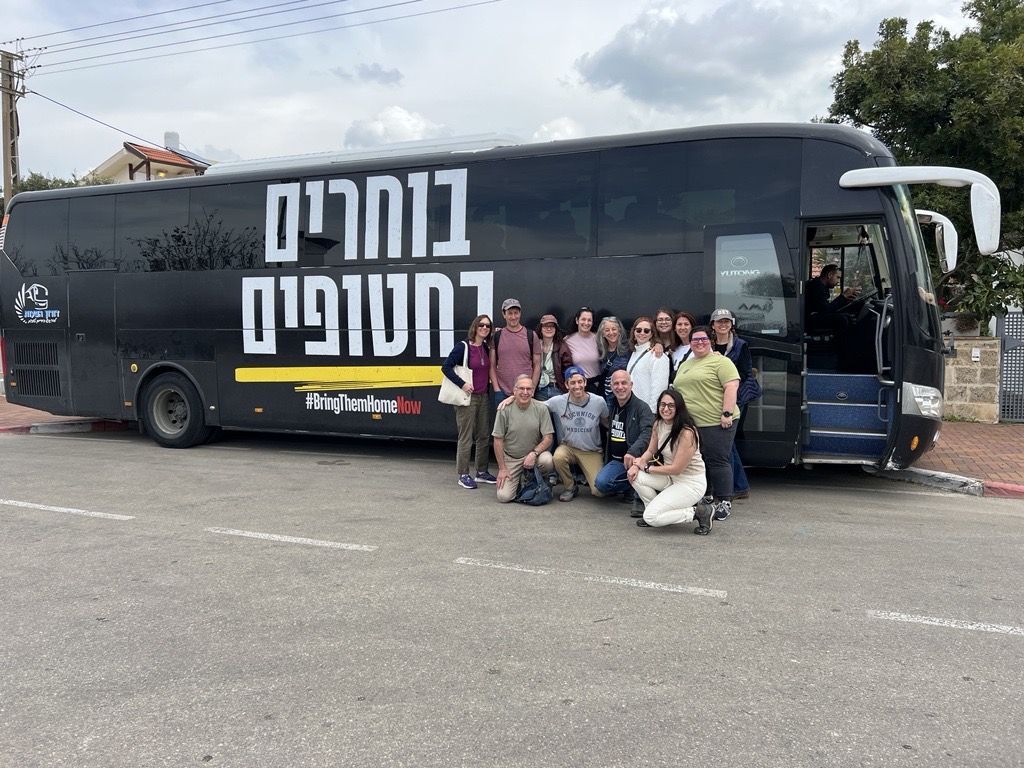
Our first stop was a hotel in the city of Zichron Yaakov, about 20 miles south of Haifa, with breathtaking views of the Mediterranean Sea. Staying in this hotel were 70 family units who have been evacuated from the North of Israel.

These families shared with us how difficult their lives have been, from trying to sort out childcare and schooling, to figuring out how they can continue to work, to how to work together with other families that have also been evacuated and are now sharing hallways in the hotel. If they choose to live in a hotel, the Israeli government pays for their hotel and food. If they choose to relocate on their own, stay with family members in central Israel or rent an apartment, then they receive a financial stipend from the government.
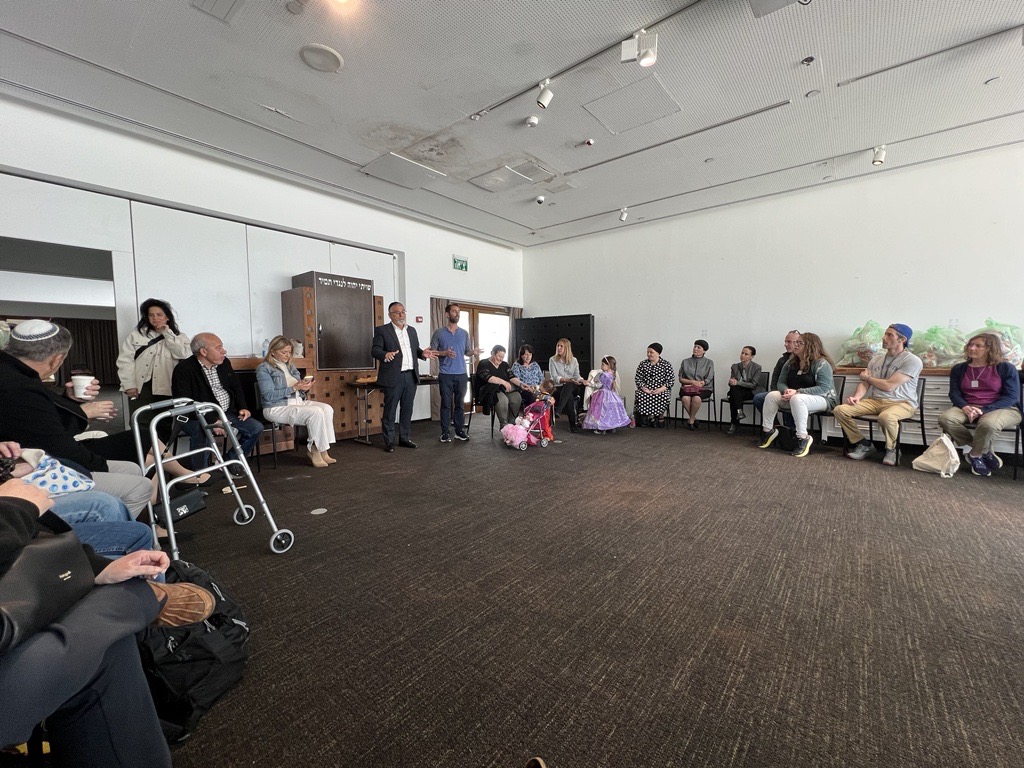
This hotel had a mix of religious and secular families. But they all shared how connected they feel to each other, to the Jewish people, and their shared commitment to return to their homes as soon as it is safe.
How do you live in a hotel with secular and religious jews together?
Rachel Siegal
Yitzhak, a religious Israeli man answered, “We are all Jews.” Chana, a secular Israeli woman answered, “Hamas didn’t differentiate between types of Jews.”
We brought all 70 families mishloach manot (treats) for Purim, which they were going to distribute at their Purim party later that evening.
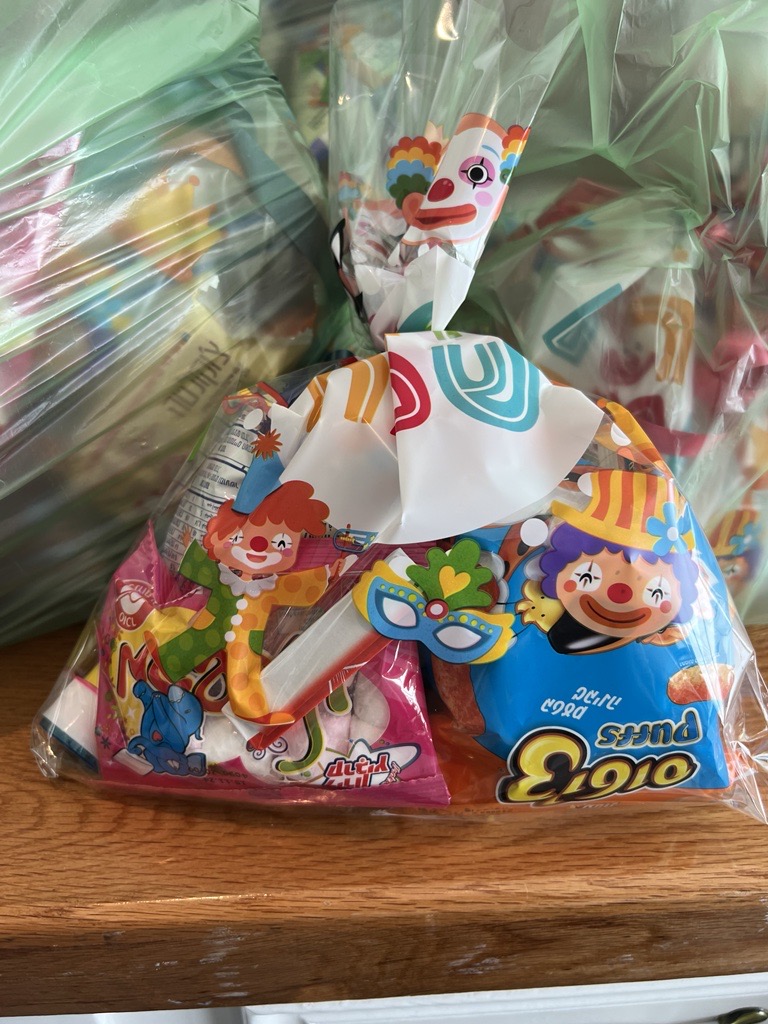

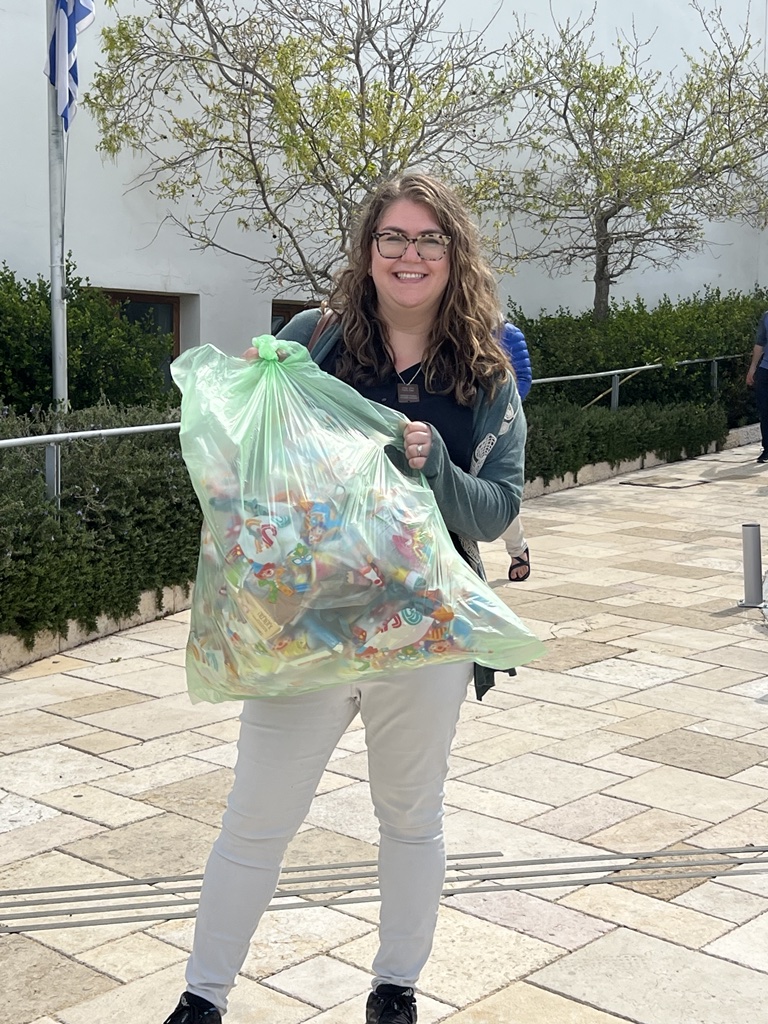
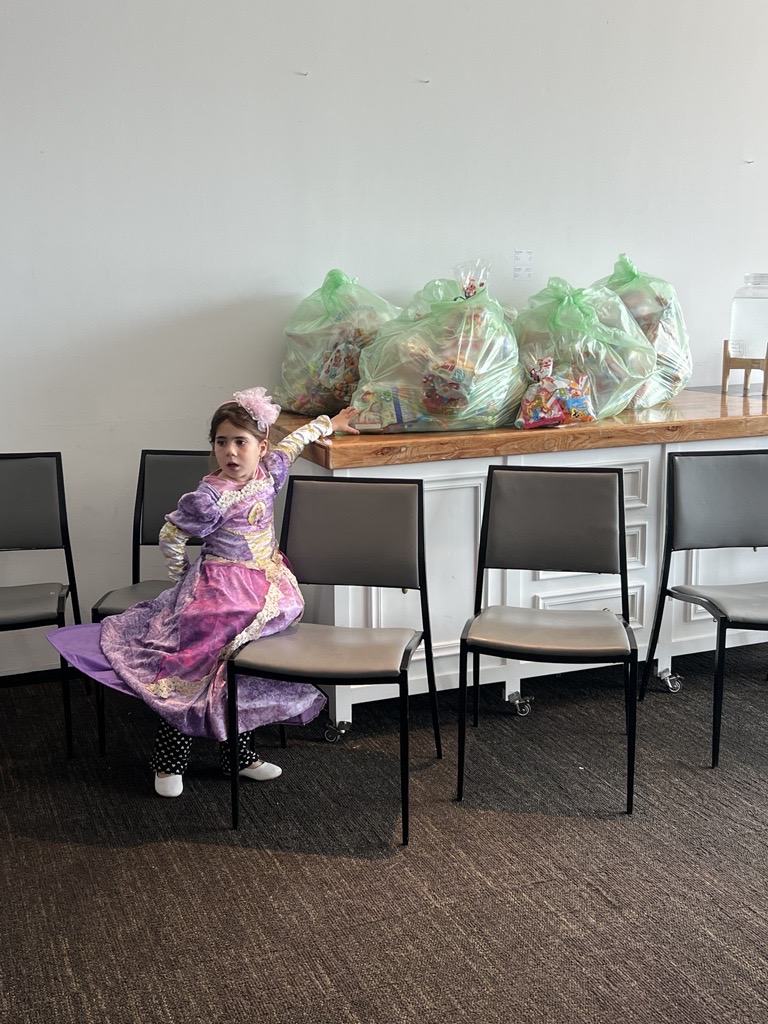
We met a mother with 4 young children who has been living at the hotel while her husband is on reserve duty. She tells her children the truth about why they’ve been evacuated. Her four-year-old daughter asked about the photos all over the walls (hostage pictures) and so the mom explained to her what they represented, people who were captured and remain in Gaza. Immediately the daughter looked at the photo of baby Kfir, grabbed her baby brother’s hand and said, “I won’t let anyone take my brother.”

Another woman shared her memory of running to bomb shelters with her grandmother in the 1973 war, and here she is now, living in a hotel with her children and grandchildren. She expressed immense gratitude for what the country is providing to her and her family, even though she misses her home.
We thanked them for their strength and courage, and they thanked us for visiting. It truly felt like a powerful expression of Jewish peoplehood.
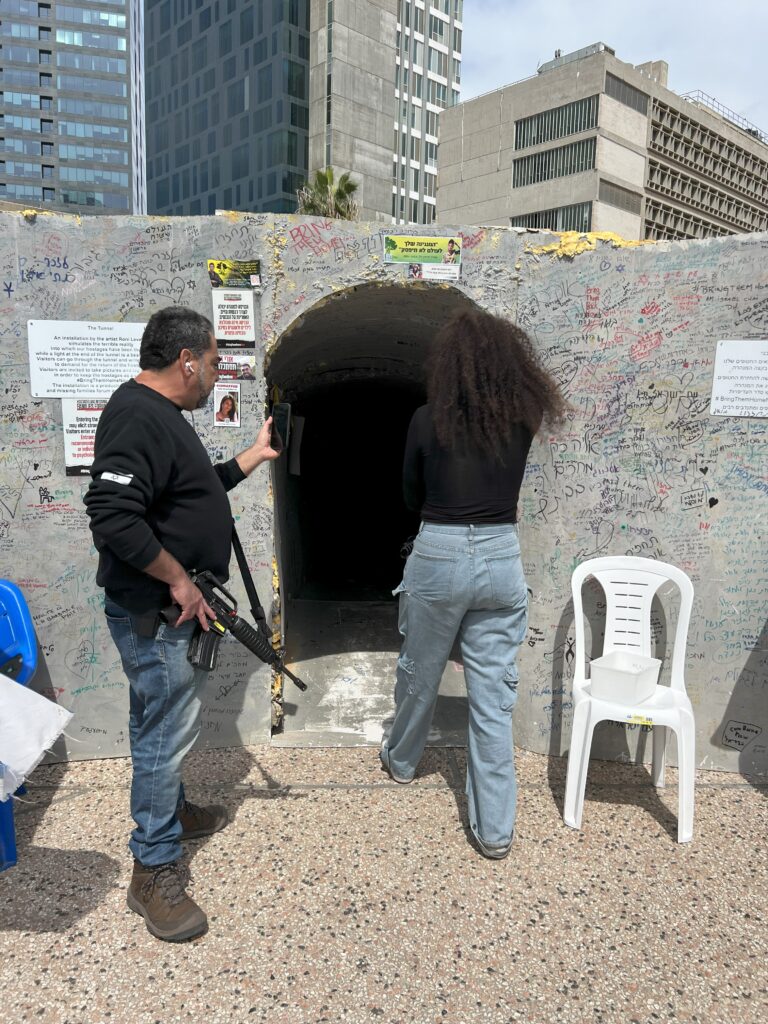
From Zichron we travelled to Tel Aviv to walk around hostage square, a central location built by volunteers and families of hostages to bring worldwide attention to their plight. There is a piano in the square that anyone can play, and we heard at least 2 people playing and singing. There are tents setup where you can talk to family members and a makeshift tunnel that you can walk through, similar to the tunnels built by Hamas.
The juxtaposition of being in hostage square during Purim was fascinating and complicated- people dressed in costume, handing out sweets, and people crying and holding each other represented both the joy and the pain of the Jewish people.


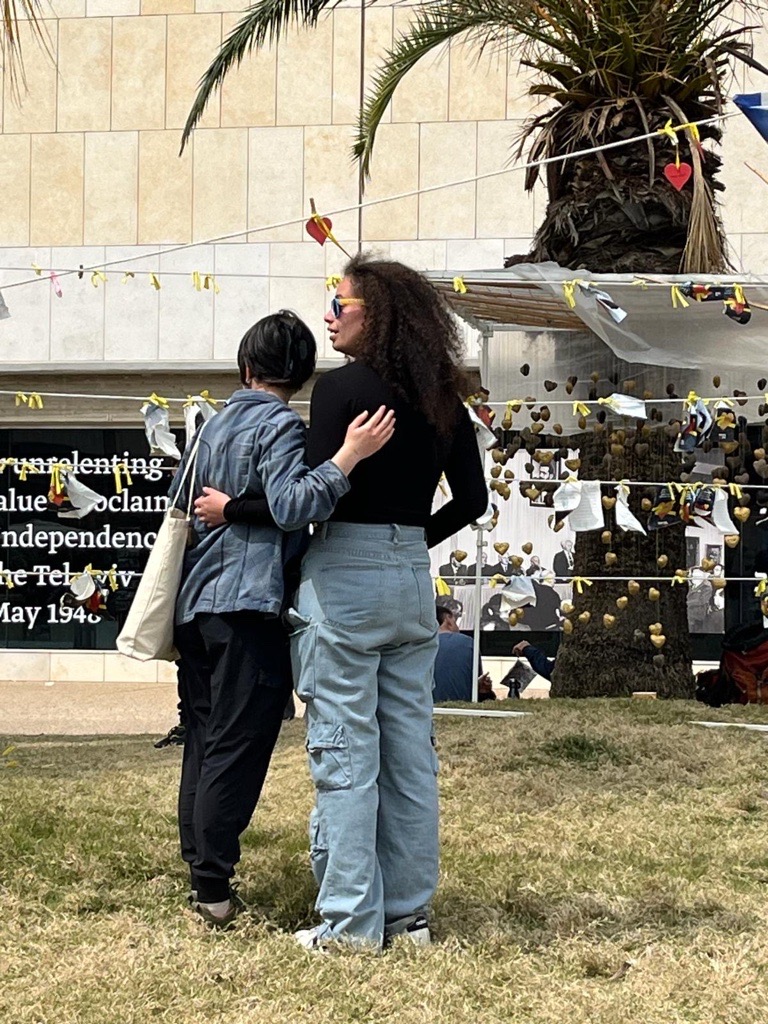
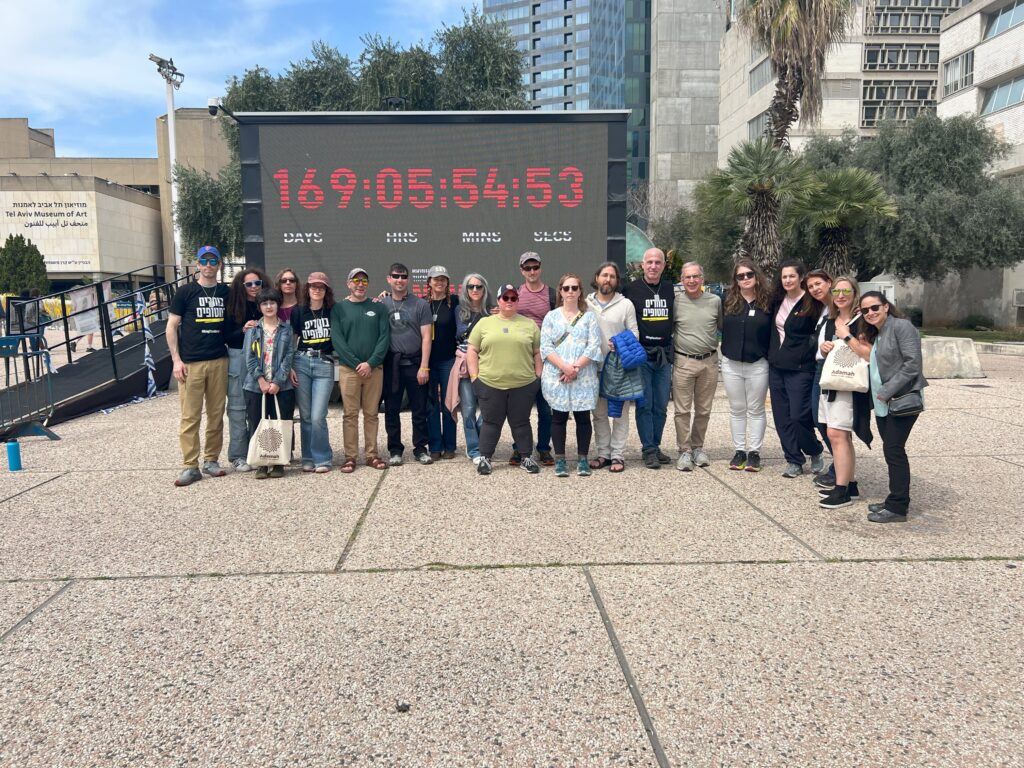
From there, we headed into our final lunch, a talk by Uri from Standing Together. Uri shared the challenges facing the peace movement in Israel. He also shared that he finds hope from looking at examples from history over the last 100 years and how far we’ve come globally for social justice movements.

We closed our time together with a closing circle, sharing praise and gratitude for each other, for the people who shared with us over the past week, and our prayers for the Jewish people. We sang “Oseh Shalom” and gave hugs all around.
Saturday
The sun was shining. It was our first day to relax and not get up early to work on the farm. Many of us stayed up late Friday night having tough conversations about the past week.
The waves were calling. Some of us went for walks or sat with our toes in the sand watching the morning surfers. At the same time, Rabbi Julia Appel led a Shabbat morning prayer service overlooking the water. We were mesmerized by the surfers and the waves while expressing gratitude to Gd for this moment, this trip, and our new community within Adamah.
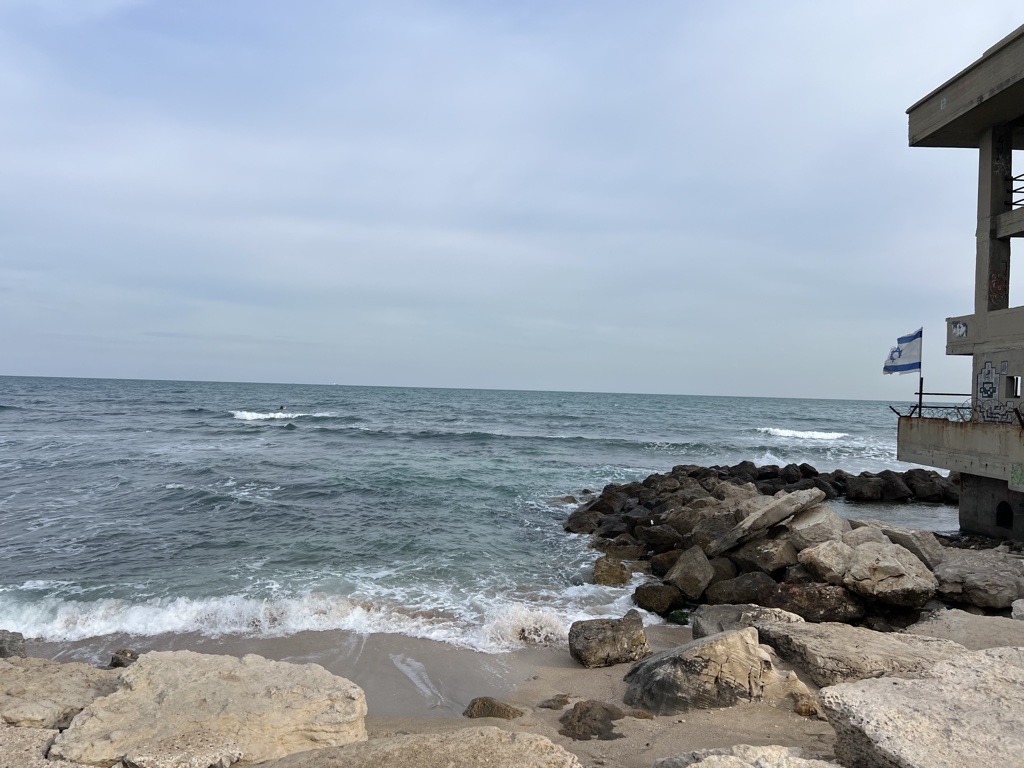
Before lunch, we met in the courtyard of the hotel for a sharing circle. Rabbi Sid Schwartz spoke beautiful words of Torah and asked us to share our personal calls to action from this trip.
After a delicious lunch, we had a free afternoon where some of us napped, and others explored Haifa.
In the late afternoon we gathered for a text study session, taking a deeper dive into the Purim story.
Shabbat ended. We did Havdalah.
We then went to a Reform synagogue in Haifa to hear the Megillah. We did Havdalah again with them before the Megillah reading started.
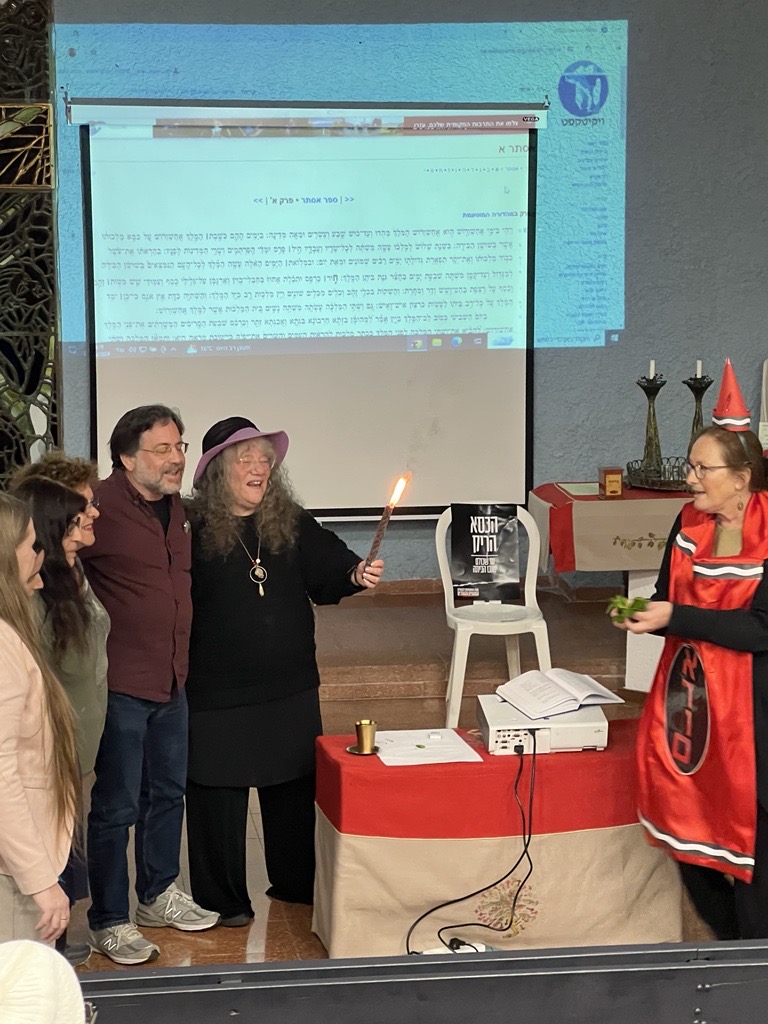
Interestingly, the synagogue community had chosen NOT to read Chapter 9 of the Megillah story, explaining that reading about the violence and human destruction in that chapter did not feel appropriate given the war.
We enjoyed a free night in Haifa, splitting off into groups and eating in restaurants in town. Our last night of the trip had us all thinking about tomorrow and travel, and also really trying to stay in the present…

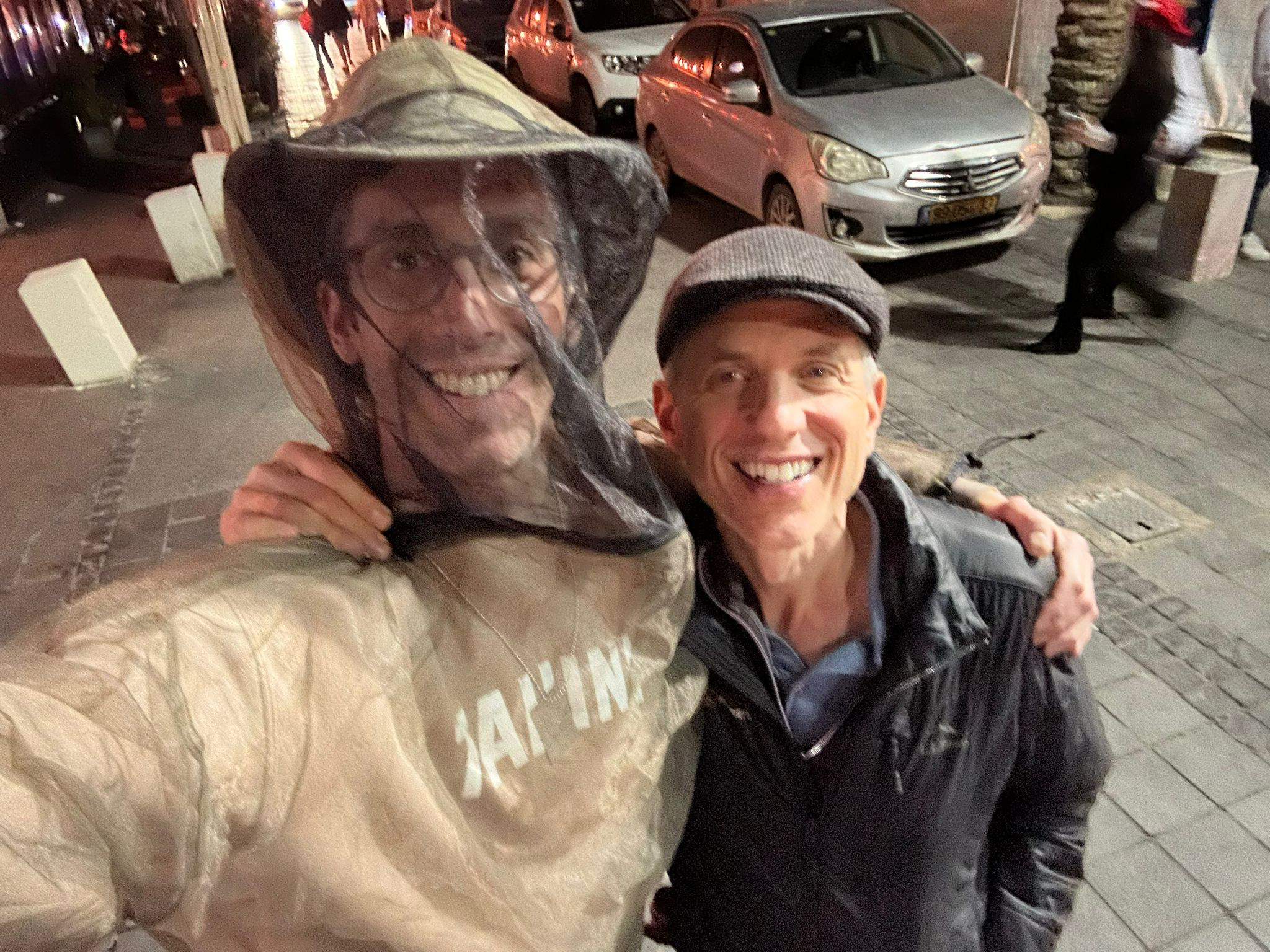
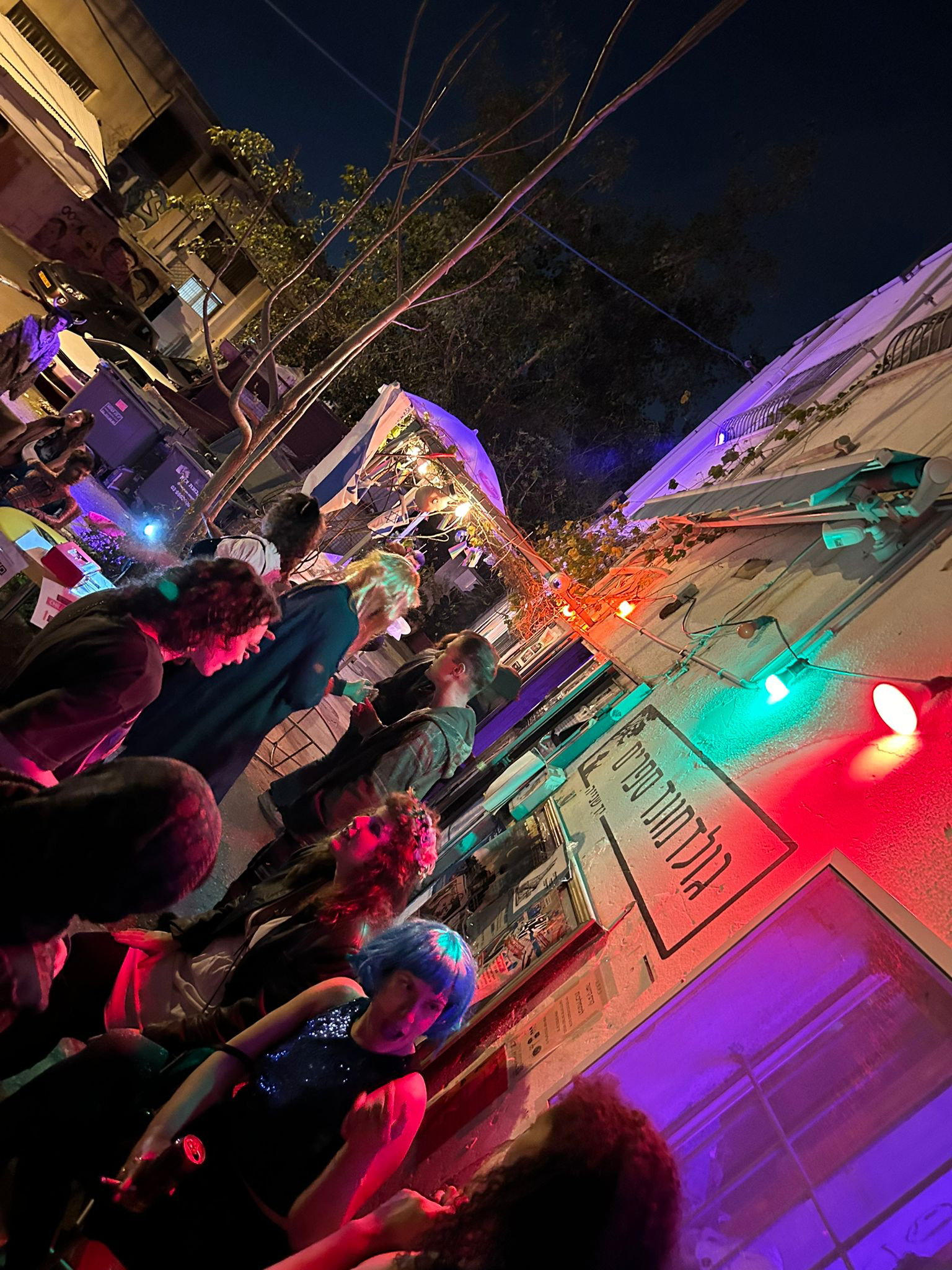
Friday
It’s our last day on the farm. Excited for sun, but we encountered rain while getting out of the vans. This rain was nothing compared to the downpours we experienced earlier in the week, so we explored the fields and found some fruit while waiting it out.
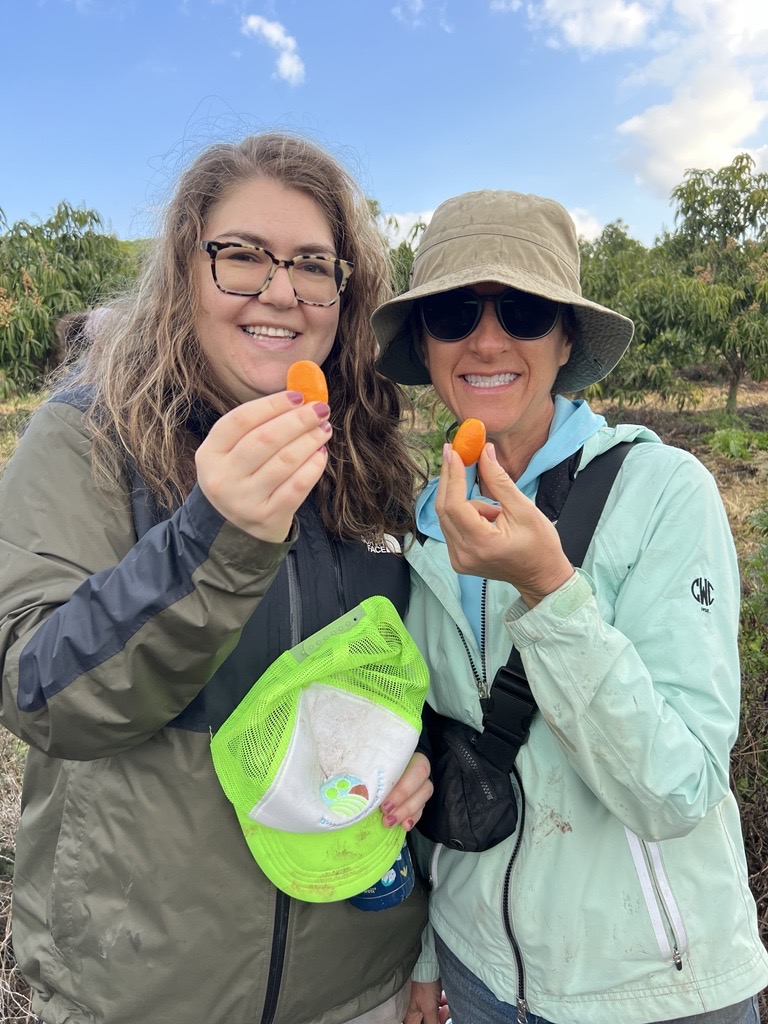

There were two tasks to accomplish: painting sunscreen on the bottom of avocado trees and trimming baby mango trees.



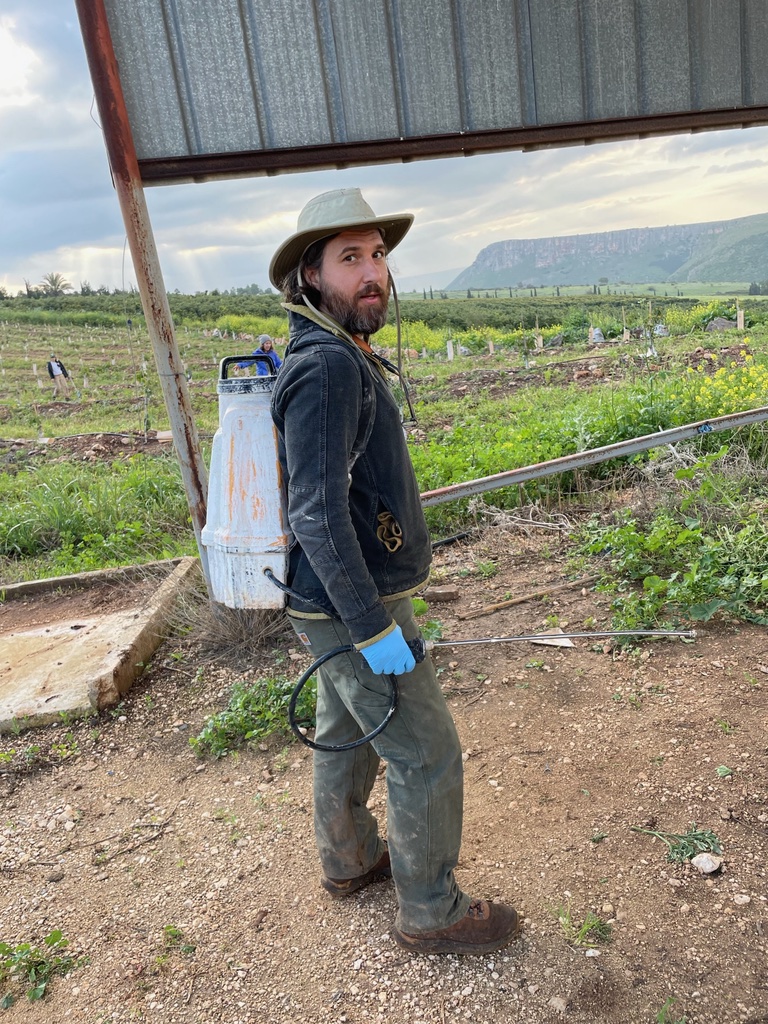
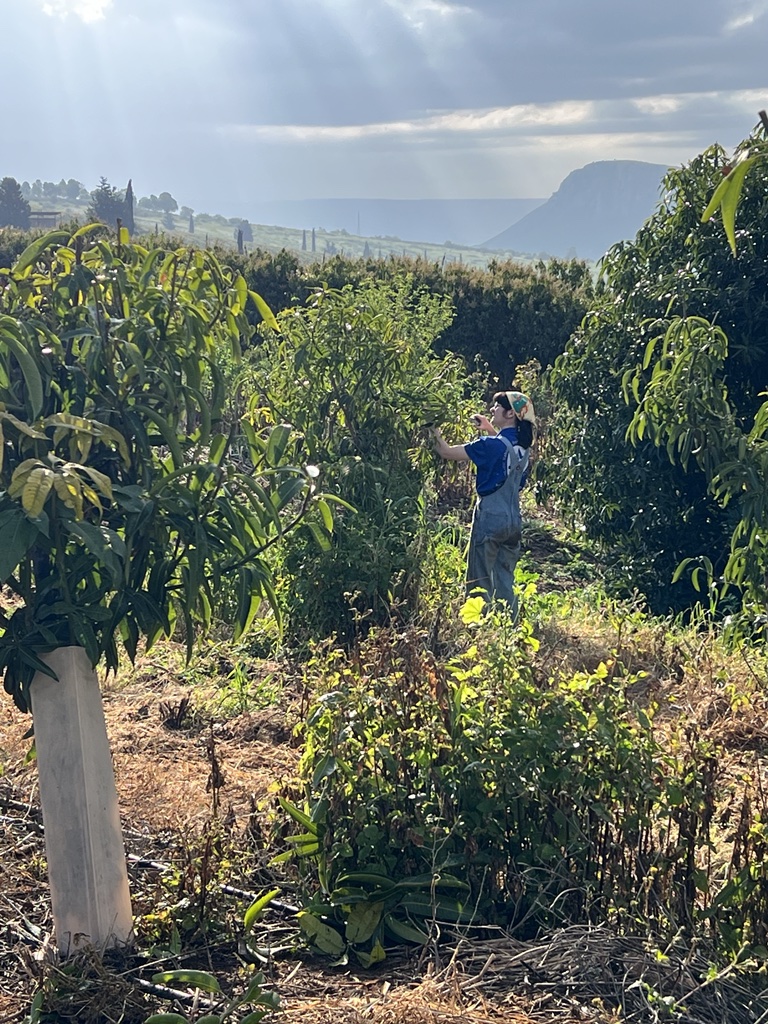

After 4 hours in the field, we held a closing circle, where we were all asked to share a one-word reflection. The most commonly repeated words were connected, rejuvenating, amazing, grateful, peaceful and strength. Marina, our Kibbutz Ravid volunteer coordinator, closed by sharing the word “Zika”, which means a deep connection between yourself and something else in the world.
We cleaned up our rooms (lots of squeegees), stripped the beds and said goodbye to our kibbutz friends.
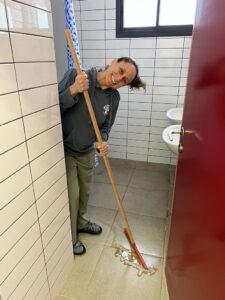
Then we headed to Haifa, where our first stop was Robin Food, a non-profit dedicated to reducing food waste. The CEO of the organization shared that 1/3 of all food grown in the world goes to waste. Robin Food encourages people to “taste the waste” and “share the spare” through cooking workshops and public events, in an attempt to shift the culture change for home chefs on a personal scale. Their program salvages food from the nearby market and shows people how to not only cook with this extra food, but also how to make it delicious. They make sweet and savory jams and chutneys, and today they were even serving syrupy cocktails for Purim!


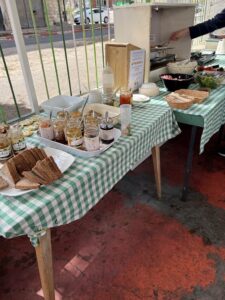
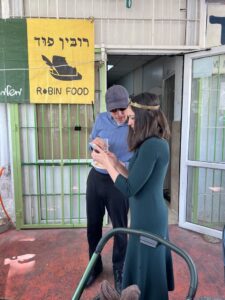

Following a yummy lunch, we checked into our hotel in the Bat Galim area of Haifa. We were greeted with sunshine and surfers, had a chance to dip our toes in the sand, take showers, and some of us even did laundry!
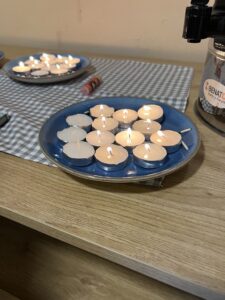
We lit Shabbat candles and then walked to the beach for Kabbalat Shabbat, led by Rabbi Julia Appel.
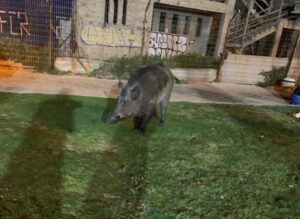
We enjoyed listening to the ocean waves and headed back for a delicious Shabbat dinner… where we were surprised by a wild boar!
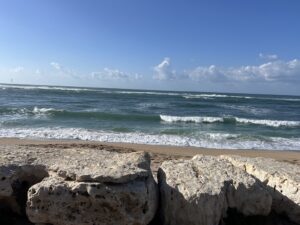

Thursday
Finally, a day without rain! Although the mud still followed us everywhere…Our entire group spent the morning from 6am-noon volunteering in the fields, continuing our work with the irrigation lines in the mango groves.
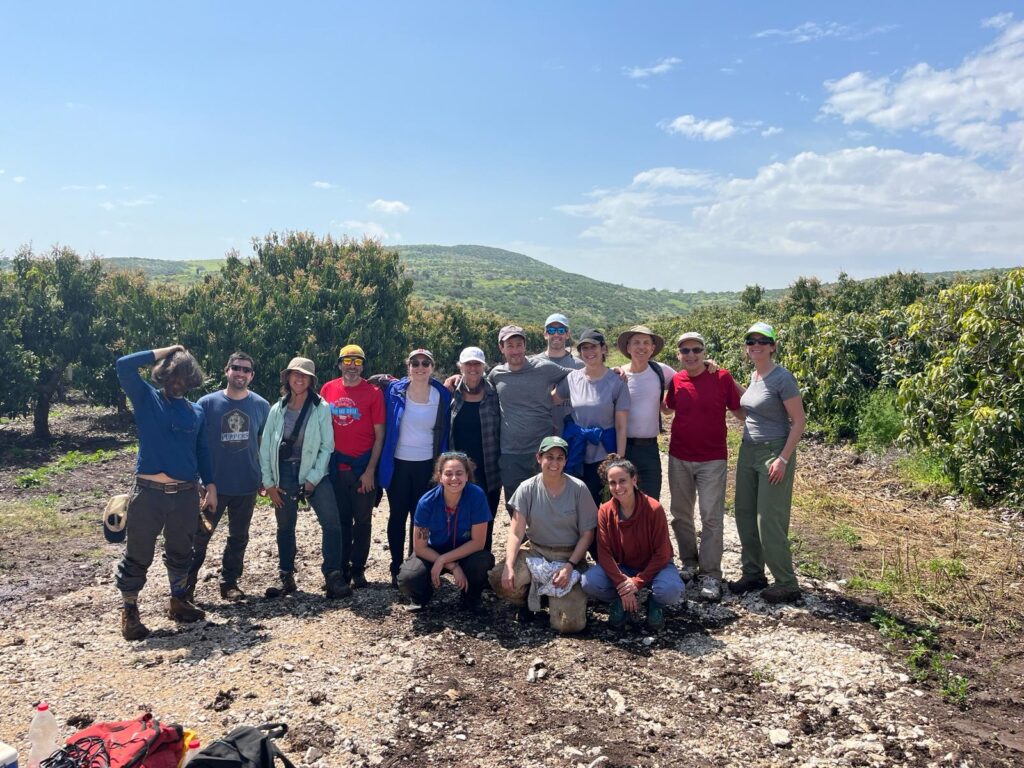
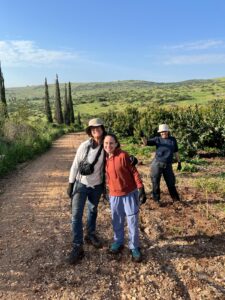
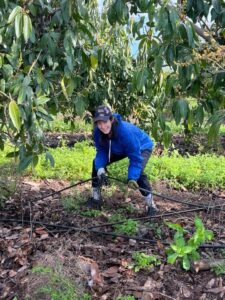
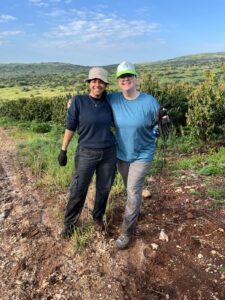
After a break to refresh and renew, the group enjoyed an outdoor picnic lunch with hummus, falafel and all the fixings! In the afternoon, we met with Sundus Salah, Director of Environmental Sustainability for Heschel Center in Arab municipalities. Even though it was late in the day and Sundus was still fasting for Ramadan, we enjoyed a long and wide-ranging discussion that included a broader understanding of workforce development in

Arab communities, the disparities between Jewish and Arabs in the Israeli economy, how women lift up economies and educational opportunities, how a university setting is often the first time Arabs and Jews in Israel get to build real friendships, and the challenges and opportunities in pushing sustainability initiatives within the Arab sector.
After a short break, we came together to participate in a global initiative for the entire Jewish world to say the Shema simultaneously across the globe as a communal wish and prayer for the safe return of the hostages. Rabbis Sid Schwartz and Julia Appel helped frame the moment, and we held several minutes of silence before coming together to recite the Shema at 5:30 p.m. Israel time.
We had a presentation from Chief Development Officer Rachel Siegal to learn more about Adamah, its work in North America and the “Peoplehood and Planethood” framework of Adamah’s Israel-Diaspora engagement platform, using the earth as common ground.
We enjoyed pizza and salads for dinner, and then headed over to the bonfire for a night of fun and bonding. Our last night on the kibbutz! Tomorrow we will have several hours of farm volunteering and then head to Haifa…
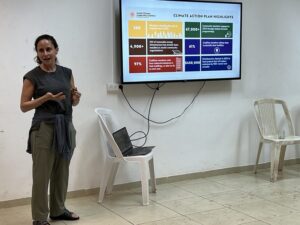


Wednesday
We woke up to rain. But despite that challenge, we came to volunteer, so volunteer we did! At 6:30am we left in 2 caravans down to the mango groves. We received a safety briefing and then instructions to get the irrigation system working. Our goal for the week is to get all the pipes aligned 6 inches from the trees, removing weeds in the way, and then tying the pipes with twine every 4 trees to keep them in place. If the pipes are too far from the tree, it’s a huge waste of water because it would be watering the weeds. If the pipes are too close, it will stunt tree growth with too much water. A healthy root environment has air and water in the soil, so a specific distance is needed to make sure the trees have air in addition to water.
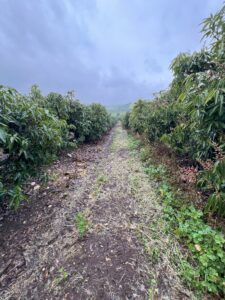
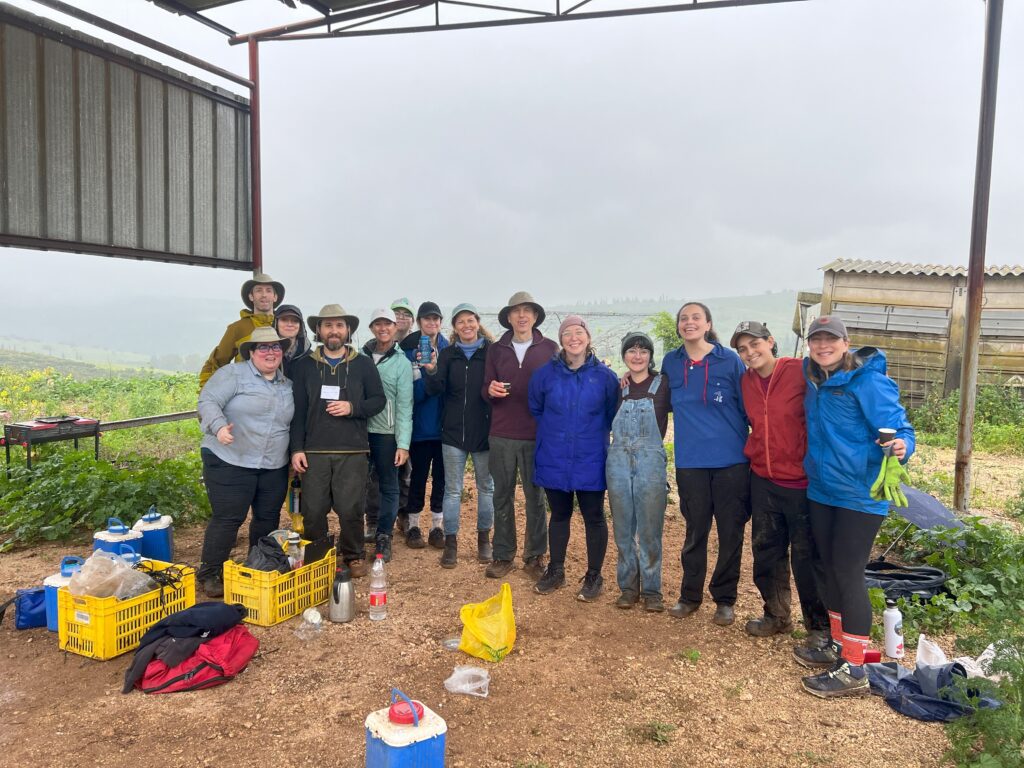
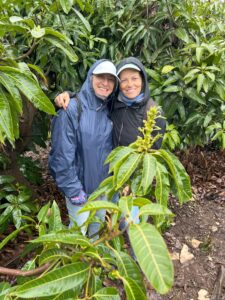
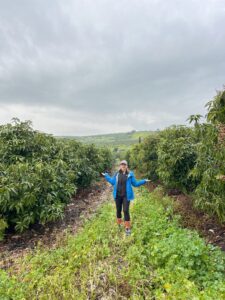


The mangoes will start growing in May. As summers get hotter and hotter in Israel, completion of the irrigation system is needed as soon as possible. Today we worked in the Lily mango grove.
After four hours of working in the rain, we were transported to an outdoor pavilion to eat the breakfast we packed the night before. Despite being soaked and muddy, some of us took part in Israeli circle dancing, as we waited for the caravans to bring us back to the kibbutz.
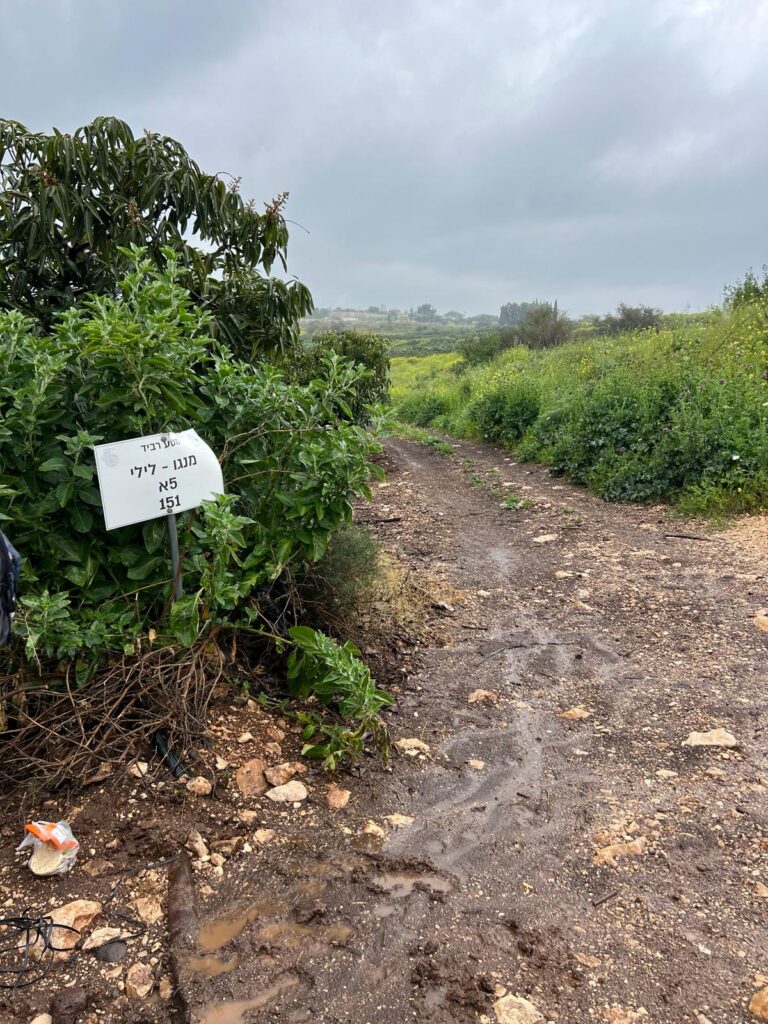
Our afternoon hike was rained out, so instead we toured Kibbutz Ginigar’s museum (the kibbutz was founded in 1922).
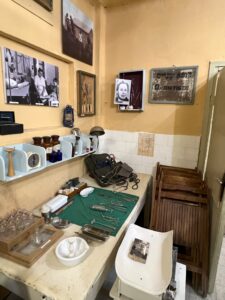
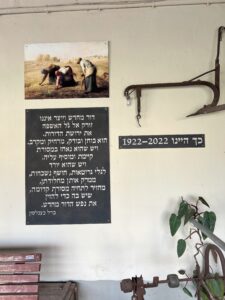
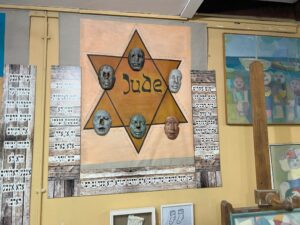
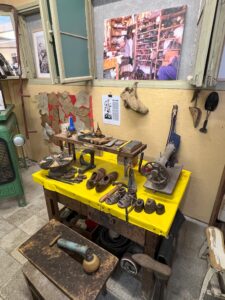
Then we heard from two alumni of the Arava Institute for Environmental Studies – Alma and Zohar, who both now work as urban planners.
The Arava is an environmental and academic institution dedicated to preparing future leaders who can meet the Middle East’s environmental challenges with innovative peace-building solutions and ensure a sustainable future for the region. Since 1996, the Arava has brought together 1,800 Palestinian, Jordanian, Israeli, and international students through its university-accredited semester program, affiliated with Ben Gurion University.

Alma and Zohar shared their experiences living and learning with peers from different backgrounds. The Arava Institute was founded on the premise that nature knows no borders. “Living with your ‘enemy’ was a radical thought before coming to the Arava,” said Zohar.
They explained that the Arava gave them a wider perspective and an introduction to the idea of having competing narratives for the same history. “Being there broke the stereotypes we grew up with and we were forced to ask the hard questions,” said Alma.
We asked how they are doing after October 7 with their Arab alumni friends, people they continued to stay in touch with who live in Jordan, Ramalah and Gaza. Are they angry? Can they continue to be friends? They both shared that they continue to be in touch with their alumni group and use their deep listening and active learning skills to maintain these connections.
We asked how they are doing after October 7 with their Arab alumni friends, people they continued to stay in touch with who live in Jordan, Ramalah and Gaza. Are they angry? Can they continue to be friends? They both shared that they continue to be in touch with their alumni group and use their deep listening and active learning skills to maintain these connections.
Hearing Alma and Zohar’s perspectives gave us a lot to think about. Before departing, Alma got on our bus to give us a heartfelt thank you for visiting Israel during this time.
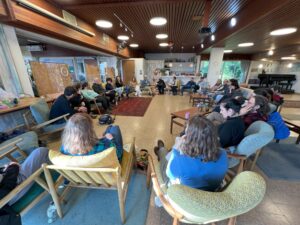
Next, we headed to an Israeli Arab community called Umm Al-Fahm to volunteer with a group of Arab Israeli teenagers.
Amanina is a non-profit organization made up of young adults who twice a week pack and deliver food boxes to families in need in Umm Al-Fahm. We got off the bus and were immediately put into groups with the teenager volunteers. After receiving instructions on what to pack in the boxes, we went into the warehouse to get started.
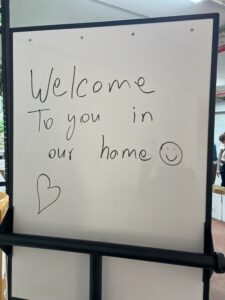
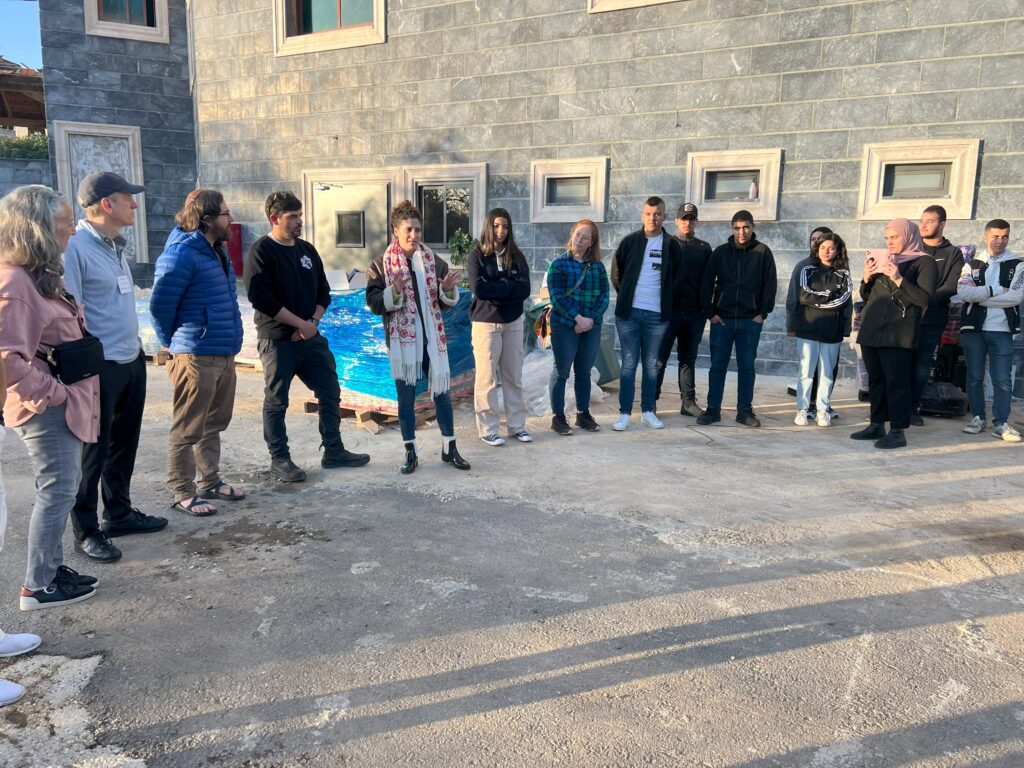

With teamwork, the groups packed 100 boxes with sugar, flour, oil, and canned goods.
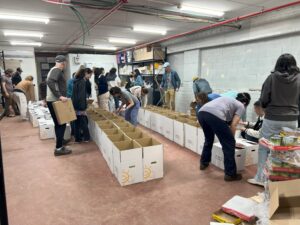
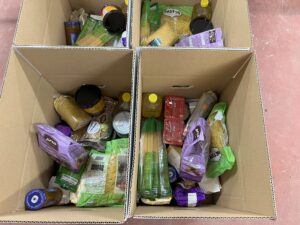


Then the sun was setting and the sounds on the loudspeakers announced it was time for Iftar, the break of the Ramadan fast. The teens all cheered, and we immediately moved the boxes of food to setup tables so we could all eat dinner together.
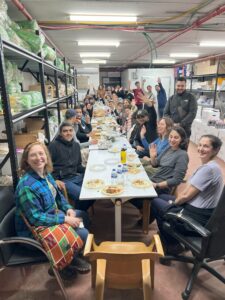
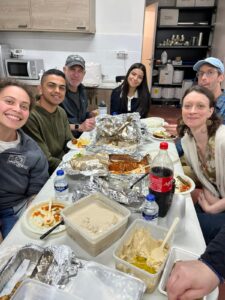

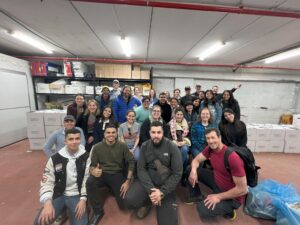
We said our goodbyes and one of the students came on the bus to say thank you over the microphone.
We left to go back to the kibbutz to get some much needed rest before our 6:00am field departure on Thursday.
Tuesday
It rained! The irrigation system will wait for tomorrow. The good news is we got to sleep in until 8:00 am and our amazing leaders were able to pull together different projects for us to work on in the rain.

Group A went to work in the greenhouse and the small fields right on the kibbutz. That group cut kale off their stems, grouped them into bunches of 12 and tied them up for packing.


“We were told to toss the bad pieces of kale. I looked at the kale and thought this kale looks better than anything I could buy in Houston. Bad pieces were ones with little holes in them from moles, but really I would eat them all.”
Joy
They did something similar with the celery, but it was pouring at that point so no pictures of the cutting, only the finished bucket.


Inside the greenhouse, a few of us trimmed lettuce stems, packed the lettuce, put stickers on lettuce containers, and filled dirt in rosemary pots.
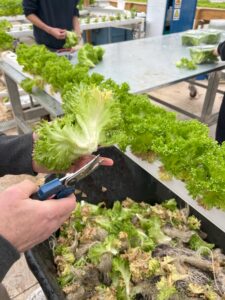
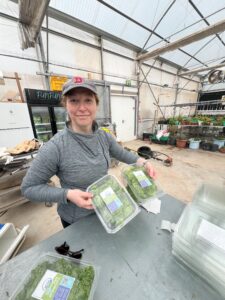

Group B was assigned to beautify the area by some of the kibbutz housing. This included digging up weeds, collecting trash, and taking discarded household items to the dump.
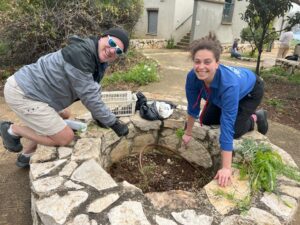

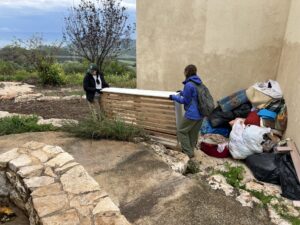
Group C went to paint some of the bedrooms and bathrooms in the kibbutz. This group took their assignment with such positive attitudes, despite some interesting surprises – like a cat hiding behind pillows and jumping off a bunk bed!
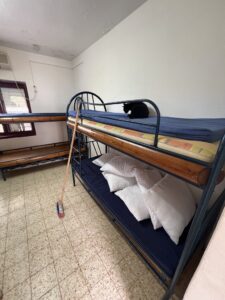
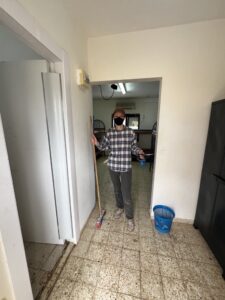
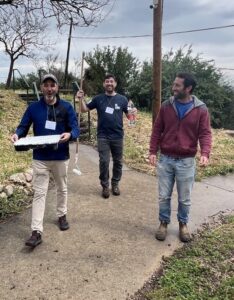

While many of us had not envisioned painting or moving old furniture on this trip, we were still so happy to help. As our leaders Gabe and Marina explained to us, this work has been on the kibbutz’s to-do list for many months, and because of us, that list is now complete!
After lunch we heard from our first guest speaker, Liat Arbel, Head of Urban Sustainability at The Natural Step. She talked about the problem of food waste and the climate crisis. We learned about the path of food waste from agriculture to industry to distributors to consumers. Many of us sat in shame as we watched a video of a strawberry’s life – from the ground to the grocery store, and ultimately to the back of a refrigerator, long forgotten by the family who put it there. The strawberry grows white fuzz and gets thrown out. Has this happened to you? We all know we can do better as the statistics are astonishing – 1.3 billion pounds in food waste every year.

The second speaker who visited us was Dr. Jeremy Benstein, a founder of the Heshel Center for Sustainability, and current lecturer at the Porter School for Environmental Studies. He spoke about environmentalism and making Israel a sustainable society. But first an overview of the land. While Israel is about the size of New Jersey, it has 2,600 plant species and almost 700 vertebrates, including 454 bird species. As a comparison for size, California “only” has 2,325 species.
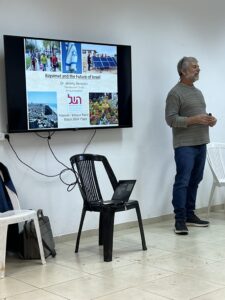
In terms of environmental work in Israel, Dr. Benstein broke it out into three paradigms – 1) nature protection, 2) sustainable development, and 3) regenerative culture. These are all things we had talked about as a group earlier in the program – so it was interesting to hear an academic perspective.
Having two speakers back to back was not part of the original plan but worked out well because it rained all afternoon. We went to dinner in the rain, packed our breakfast for the fields and went to bed praying for no rain so we can do the farm volunteer work we all came to Israel to do!
Monday
We have arrived! There are 23 of us from all over North America, including Toronto, California, Texas, Tennessee, Michigan, Maryland, Washington DC, Vermont, Pennsylvania, New York, and New Jersey. We have 2 Andy’s and 2 Gabe’s and we all love matzah ball soup!
We met at 3:00 at the Tel Aviv airport and started our two-hour bus ride to Kibbutz Ravid. On the ride, we were briefed on the situation in Israel and practical tips in the slim chance there are sirens that alert us to rocket fire.
Upon arriving at the kibbutz that overlooks a gorgeous view of the Kinneret, we met with our Adamah Israel Service Trip Coordinator, Gabe Axler, and the agricultural director Marina and two other leaders, Yifat and Coral, who will be our guides on the farms.
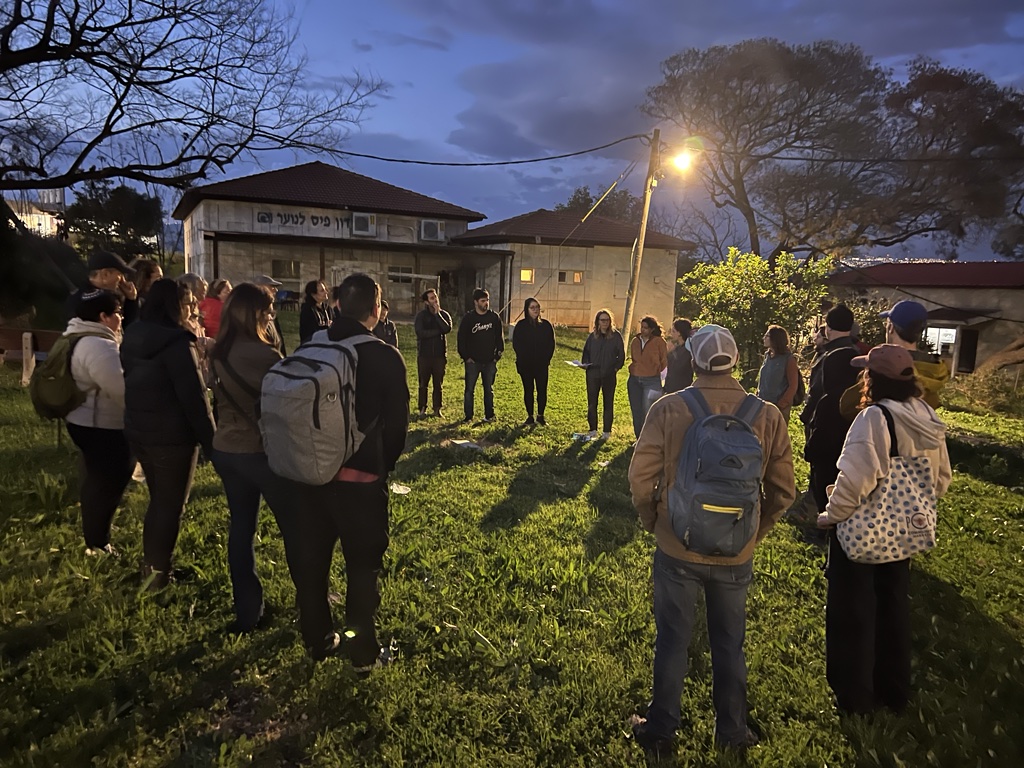
While standing in a circle outside, we learned about the establishment of kibbutzim in Israel and specifically how Kibbutz Ravid was founded. We could see the mata’im (agricultural fields) below a cliff and got a brief description of the work we would be doing… and that we had to be ready by 6:00am to go in the van that would drive us down to those fields.
Everything on the kibbutz is setup in a circular manner (which has been very challenging for some of us – who keep getting lost). We were briefed on how to get to our rooms, where the dining hall is, and other logistics like how to turn on our water heaters to take a shower. We got our roommate assignments and were sent on our way to unpack.
After dinner, we met as a group to really start the trip. Although it was clear we were jetlagged, all of us were thrilled to have made the trip and be in Israel… and for one of us, it’s their first time in Israel!
Marina gave us an overview about how kibbutzim were essential to the foundation of the state of Israel. Then in the 1970s and 1980s, the next generation began moving away from kibbutzim into cities. In response, kibbutzim began to privatize, and as a result there are very few kibbutzim that exist today that run in the socialist model from years ago.
The story of Ravid, the kibbutz where we are, is a little bit different. In the 1990s, with the crisis of adapting kibbutzim to modernization, a new idea grew. Take the education and collective values from the kibbutz and bring it to the city. So, Kibbutz Ravid, which was abandoned in 1986, was given a chance to rebuild as a kibbutz as an education hub in 1994.
Upon being rebuilt, it was decided to put the classrooms in the center. While most kibbutzim have the dining hall in the center, along with housing, this kibbutz put its big seminar room in the center. Of course, this makes it even more challenging for those of us who are directionally challenged to navigate! It also means that the housing is spread out all over on the outskirts.
People travel across the country to come to Ravid for seminars and workshops. There is a pre-army educational program housed here, a technical high school where students work and learn a trade, and a kindergarten for kibbutz members and local families. And last but not least, the reason why we are here is for their agricultural training in the mata’im (agricultural fields), the program that Marina leads.
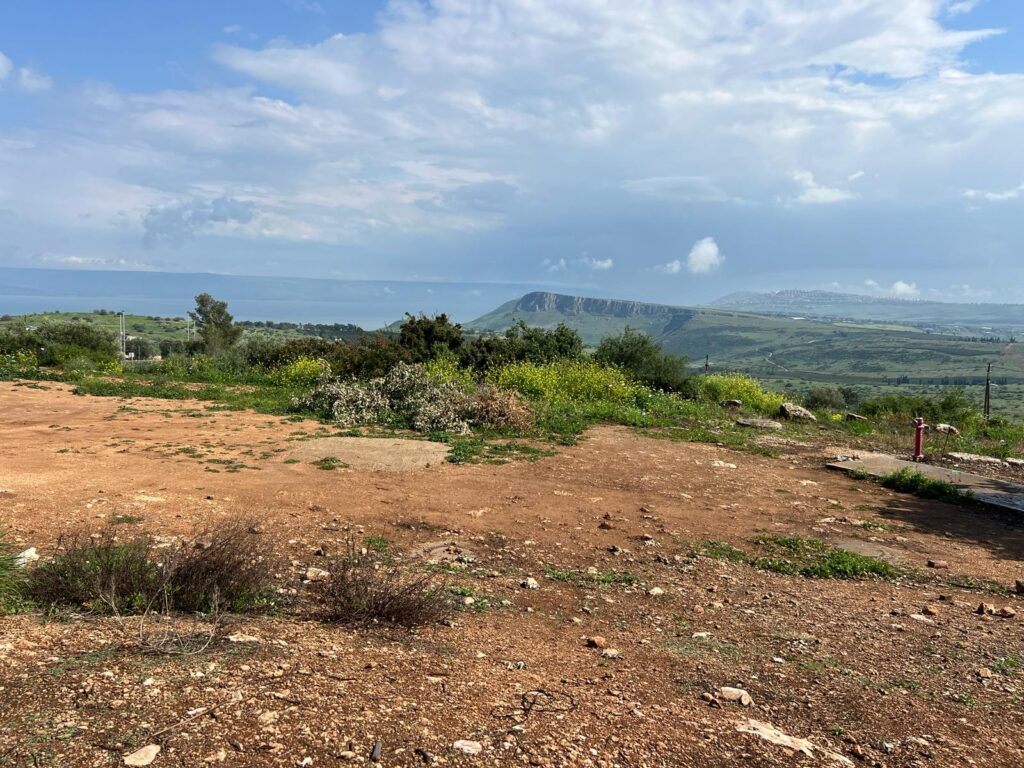
Marina, who has been in her role for the last 3 years, explained the uniqueness of her program. Ravid does not import foreign workers like others in Israel do, but rather get labor from volunteer groups of students and youth movements from all over Israel. There are 8 full-time staff members who manage the day-to-day work. Due to the situation in Israel, the gap year student groups have not been coming, half of the staff are in miluim (army reserve service), so we are here to help in their absence. Marina stressed the importance of getting everything to be ready for summer.
We are grateful for the opportunity to be part of this community. Each of us feels fortunate to contribute and hopeful that our collective efforts will leave a lasting, positive impact. We all left feeling energized and are excited for tomorrow… to work on the irrigation system. Stay tuned!

